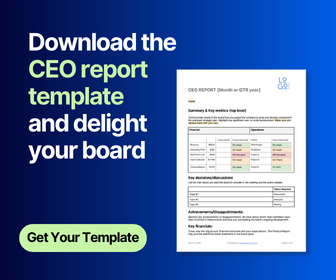Board Members Need to Lead the Way
For organisations to thrive it is important for board members to clearly articulate expectations to management with a shared lexicon on what success constitutes. The boards role is to at minimum sign off on strategy. It is management’s role to buy into the agreed strategy and then execute.
Here are four areas that board members will want to ensure are in place to avoid ankle tapping performance.
1. What does the board want to see?
- It is the boards prerogative to determine any and all information that is wishes to receive. However, a good board balances its requirements mindful of the time it will distract management from executing the strategy. At a minimum, the board will want to see a clear strategic plan (usually annually), regular board papers that track strategic performance and organisational health and periodic ‘deep dives’ on specific matters i.e risks.
- The board will determine the appropriate size of board pack with management and the key areas of content. This includes the expected depth of pre-reading material and outcomes sought from papers prepared by management;
- High performing boards spend time determining the key levers that most affect performance. Those points will often manifest itself in a dashboard that helps board members to concentrate their time on the areas requiring their attention;
- Key matters should clearly link to the achievement of the strategy of the organisation. Where this is falling short of expectation, board members need to clearly explain their requirements. This is best shared in a constructive manner to assist management to succeed.
2. Board specified frequency of contact
- In light of the legal obligations on board members, the board will determine how long and how often a board needs to meet to carry out its duties. Secondary consideration is made between age and stage of the business;
- The board will also determine with whom it wishes to meet. This includes [senior] executives, customers and other key stakeholders. This is to ensure that the board members receive feedback from a wider range of sources than solely the CEO [and perhaps CFO];
- Board members are responsible 24/7. In between board meetings the board members may meet with a number of associated parties to the organisation. In NFP roles this often extends to [potential] funders;
- Guidance from the chair on leaning in / leaning out is important to help the organisation. Care and respect needs to be demonstrated in being invited in to certain situations, and also in knowing where a director’s skills are better elsewhere applied.
3. Board level of Enquiry
- Organisations deal constantly with uncertainty. This cannot be avoided and board members need be comfortable with this to be both sanguine and successful in their roles. Management will expect inquiry, and should be happy to provide a reasonable level of available information to assist board decision making;
- It is the role of the board to weigh up the situation and to provide considered, and one voice of guidance once a board decision has been reached. Board’s that do not reach a consensus that members can run the risk of confusing management;
- Board’s will routinely test management thought on certain topics. Opinions on the best course of action may change for example through an economic cycle on the best course of action or on receiving fresh information. This is to be expected and encouraged;
- However, it is the role of the director to run to ground areas of concern through further request for information to receive a satisfactory explanation of conjecture or where possible determination of fact.
4. Formal agreements (at inception)
- Successful boards document and share guidelines of approach, process and behaviour. These are included in the Company Constitution, the Board Charter/Policies and where applicable the Shareholders Agreement. Meeting Agendas and Minutes are agreed by the Chair ahead of circulation to the concerned parties;
- Delegation of Authorities documents are prepared and periodically reviewed which set the parameters of independent action up to prescribed thresholds. This balances the need to keep the Organisation moving and a “no surprises” tacit arrangement;
- Employment contracts negotiated by the board (perhaps advised by the Remuneration Committee where in existence) with the CEO set further guidelines on expectation, and generally contain a structure of short- and long-term reward for success;
- Evaluation of performance is a further mirror and check in for the board to review its own success. The CEO review is usually performed by the Chair. Confident boards bring the CEO into a 360 degree review of board performance to recognise and improve on assisting the Company deliver its stewardship on behalf of its Shareholders.
Board members need to lead the way to increase the likelihood of success of the Organisation. In culture – they set the tone. In structure – they set the rules. In success they shine the headlights for management to avoid the potholes.
Want to know how your board of directors and managers can be more productive and efficient through the use of technology? With BoardPro board software, you can centralise board information, get organised, save time, and reduce hassle. With BoardPro, everything is just a couple of clicks away.
Share this
You May Also Like
These Related Stories

How to Identify and Manage Risk when you're on the Board

How to Conduct Effective Strategic Risk Reviews


